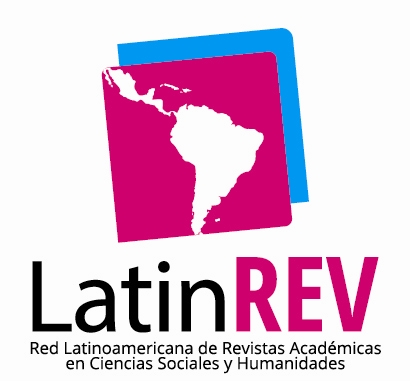Environmental Management in Feedlots: Assessment of Impacts and Sustainability
DOI:
https://doi.org/10.5281/zenodo.14502012Abstract
This study, part of the project "Relevant information on the productive sector of Greater Río Cuarto", evaluates the environmental impact and management practices in feedlots in the province of Córdoba, Argentina, with an emphasis on cattle farming. The adoption of agricultural practices such as direct seeding and the use of transgenic seeds has displaced the agricultural-livestock rotation, favoring the expansion of these establishments and generating environmental, economic and social challenges, such as soil, water and air pollution.
The methodology included bibliographic analysis, regulatory review and a case study in a long-standing feedlot, complemented by interviews and analysis of secondary data. The work investigated waste management practices, evaluated the effectiveness of mitigation measures and formulated recommendations to improve environmental sustainability.
The hypothesis was that improving waste management would significantly reduce pollution. The findings indicate that, although environmental management is essential, factors such as operational routine and lack of state controls limit investments in improvements. The need for a decentralized and local approach to promote more effective environmental management in intensive feedlots was thus identified.
The study concludes that the role of the State in strengthening the sustainability of these establishments is essential, through training programs, advice and rigorous controls. It is recommended that future research formulate proposals focused on local actions to consolidate environmental sustainability in feedlots.
Downloads
References
http://www.fao.org/docrep/019/as400s/as400s.pdf
https://es.wikipedia.org/wiki/Feedlot Código Ambiental Río Cuarto 2017
Código de Buenas Prácticas Agrarias de Castilla y León
Compostaje en la Argentina: experiencias de producción, calidad y uso (María Julia Mazzarino y Patricia Satti). Orientación Gráfica Editora, 2012.
Fink, N. Informe: ENGORDES A CORRAL EN ARGENTINA Una amenaza para la salud, el ambiente y la producción campesino-indígena. 2010. Disponible en: https://www.biodiversidadla.org/Documentos/Engordes_a_corral_en_Argentina
Jesús A. Guevara González, Adelfa del Carmen García Contreras, Yasmin Guadalupe de Loera Ortega. Gestión ambiental. En: Susana Verónica del Castillo Pérez, Álvaro Ruíz, Jesús Hernández, Josep Gasa, Editores. Manual de Buenas Prácticas de Producción Porcina. Lineamientos generales para el pequeño y mediano productor de cerdos. Red Porcina Iberoamericana. 2012: 78-96.
Gil, S. Feedlot, elementos que intervienen y posibles impactos en el medio ambiente. Sitio argentino de producción animal. 2005. Disponible en: https://www.produccion-animal.com.ar/informacion_tecnica/invernada_o_engorde_a_corral_o_feedlot/76-fedlot_impactos_medio_ambiente.pdf
Ley 9306. REGULACION DE LOS SISTEMAS INTENSIVOS Y CONCENTRADOS DE PRODUCCION ANIMAL (SICPA). Disponible en: https://www.argentina.gob.ar/normativa/provincial/ley-9306-123456789-0abc-defg-603-9000ovorpyel/actualizacion
LEY NACIONAL DE PRESUPUESTOS MÍNIMOS PARA LA GESTIÓN SOSTENIBLE DE LOS SISTEMAS INTENSIVOS Y CONCENTRADOS DE PRODUCCIÓN ANIMAL. Disponible en: https://www4.hcdn.gob.ar/dependencias/dsecretaria/Periodo2020/PDF2020/TP2020/4978-D-2020.pdf
Pordomingo, A. Gestión ambiental en el feedlot. Guía de buenas prácticas. INTA Anguil, La Pampa, Argentina, 2003.
RESOLUCIÓN-329-2017-SENASA - SERVICIO NACIONAL DE SANIDAD Y CALIDAD AGROALIMENTARIA. Disponible en: https://www.senasa.gob.ar/normativas/resolucion-329-2017-senasa-servicio-nacional-de-sanidad-y-calidad-agroalimentaria
Rodríguez, Claudia. Residuos Ganaderos. Cursos de Introducción a la Producción Animal. FAV, UNRC. 2002.
Páginas web consultadas:
http://www.agenex.net/images/stories/deptos/los-residuos-ganaderos.pdf
http://repositorio.uchile.cl/tesis/uchile/2009/cf-araya_mb/sources/cf-araya_mb.pdf

Downloads
Published
Versions
- 2024-12-18 (2)
- 2024-12-18 (1)
Issue
Section
License
Copyright (c) 2024 Fundamentos

This work is licensed under a Creative Commons Attribution-NonCommercial-ShareAlike 4.0 International License.
Usted es libre de:
- Compartir — copiar y redistribuir el material en cualquier medio o formato
- Adaptar — remezclar, transformar y construir a partir del material
- La licenciante no puede revocar estas libertades en tanto usted siga los términos de la licencia
Bajo los siguientes términos:
- Atribución — Usted debe dar crédito de manera adecuada , brindar un enlace a la licencia, e indicar si se han realizado cambios . Puede hacerlo en cualquier forma razonable, pero no de forma tal que sugiera que usted o su uso tienen el apoyo de la licenciante.
- NoComercial — Usted no puede hacer uso del material con propósitos comerciales .
- CompartirIgual — Si remezcla, transforma o crea a partir del material, debe distribuir su contribución bajo la la misma licencia del original.
- No hay restricciones adicionales — No puede aplicar términos legales ni medidas tecnológicas que restrinjan legalmente a otras a hacer cualquier uso permitido por la licencia.






